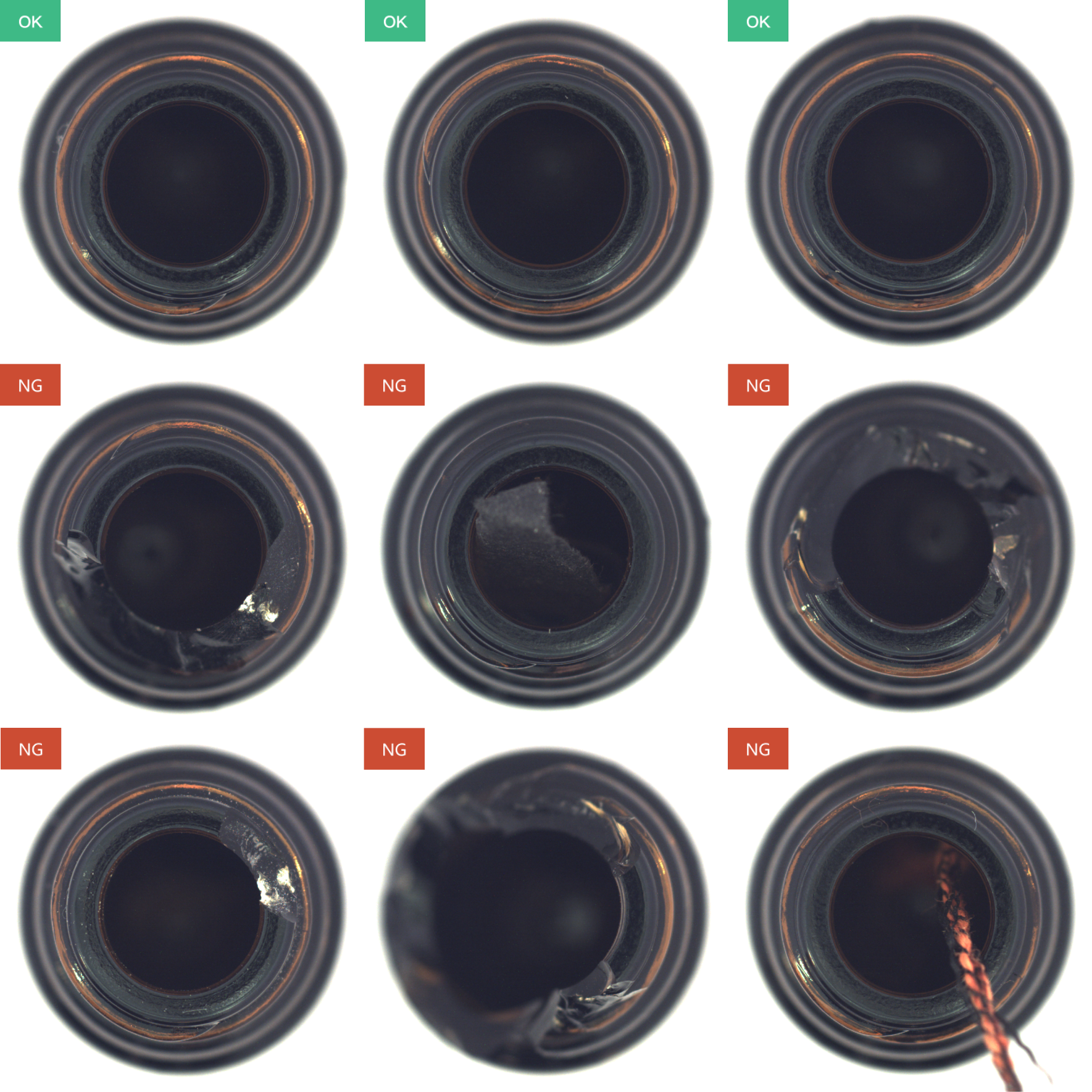Introduction
Unsupervised learning is a machine learning approach where the model learns patterns, structures, or characteristics from data without labeled inputs. The Unsupervised Segmentation module is suitable for defect detection projects where OK images are highly consistent. You only need to label whether an image is OK or NG (labeling NG is optional) without marking the exact contours of defects. The module can then classify images in the dataset as OK, NG, or Unknown, and highlight approximate defect areas using a heatmap.
| The Unsupervised Segmentation module is suitable for scenarios where OK images are highly consistent, defect types are diverse, and cannot be exhaustively listed. In contrast, the Classification module is suitable for cases where defect localization is not required and all classes can be clearly defined. |
Application Scenario
Quality inspection: The algorithm is applicable to scenarios where defect shapes, positions, and sizes vary, but differences between OK images are small.

